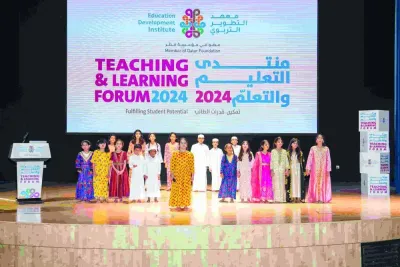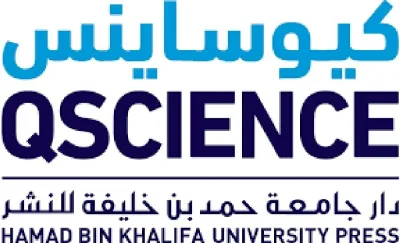Justine Cassell’s research aims at providing machines with conversational,
social and narrative intelligence so that they can interact with humans in
human-like ways, writes Shalinee Bhardwaj
A video forward currently popular on Facebook set me thinking about how sensitive a child’s world can be. Quite often missed or overlooked by adults, this fragile wrap is so prone to shattering without a noise!
The message it states is clear and simple — “A teacher should be a mom too”. It exemplifies the immense positive changes that a teacher’s encouraging and caring attitude can bring about in a student; if only she would understand what’s going on in his or her little world.
This student appeared inattentive and unkempt in the class, bearing the brunt of her scolding and detest, till the time she realised the reason behind his behaviour: he carried the scars of losing his mother forever!
It’s a well-known fact that a child’s socio-emotional status and stability deeply influences the learning behaviour in the child. This, in turn, may be affected by a number of factors such as communication, classroom dynamics or diversity in the educational system, many of which may appear to us as trivial.
In an era where digital technology is playing an equally parallel role in the teaching learning process alongside the human teacher, can machines be made to understand such crucial dynamics and impact education in order to achieve the highest learning behaviour? Today, when babies are literally born with iPads, can the digital world be used to evoke the best that humans are capable of?
Justine Cassell’s research and work centres around this complex human-machine interaction to enhance communication and learning outcome in its users.
Justine Cassell has a multitude of degrees and prestigious awards to her credit and is the Associate Vice Provost of Technology Strategy and Impact at Carnegie Mellon University and the Co-Director of the university’s Simon Initiative.
In her recent lecture as part of the Dean’s Lecture Series held at Carnegie Mellon University-Qatar (CMUQ), she talked about the “future of technology enhanced learning in a global context”.
Her illustrious work includes developing the Embodied Conversational Agent (ECA), a virtual human capable of interacting with humans using both language and non verbal behaviour. Her research aims at providing machines with conversational, social and narrative intelligence so that they can interact with humans in human-like ways.
“The current technology-based education tools such as the Internet, CD-ROMs and other educational computer software provide a wide access to content and information. Yet they are unable to generate strong learning outcomes. The reason is that a majority are based on the theory of taking the child as a passive receiver of information!
On the contrary, a child learns better when he is actively engaged in the process of continuous discovery”, says Cassell. “With this in mind, my students and I developed the notion of a computational artefact that would listen to children rather than feeding them information. These artefacts, called Story Listening Systems (SLS) listen and respond appropriately to children.”
What sets her work apart is that these ‘systems’ or ‘agents’ are loaded with the knowledge of narrative, how children develop language skills and the nature of peer interaction.
This has been made possible after a plethora of detailed experiments that were conducted to study the communication pattern, speech and linguistics, body language and social and behavioural responses of children in real time situations.
In her lecture, Cassell explored two important elements that affect learning and achievement — the socio-cultural mismatch in a culturally diverse classroom and secondly, the necessity of rapport or bond.
Describing the studies conducted on groups of children in schools in America, Cassell brought out the fact that how a small thing as speaking a different dialect in the class rather than the mainstream language which other children speak, can affect the child in achieving his/her true learning capability.
Under majority situations, the non-standard dialects of students have been identified as being strongly associated with reduced performance on mainstream evaluations of literacy. The fact that dialect is a reflection of cultural diversity or home culture and identity seems to go unnoticed.
This disturbing observation of achievement gap, lower reading, science and math test scores led Cassell and her team to design appropriate technology that could somehow bring about enhanced learning in such children.
The applicability of the ECA developed in Cassell’s lab was tested with children in classroom situations. This virtual peer named ‘Alex’ models verbal and non verbal behaviours of Afro-American children between the ages of 8-10 years who speak African American Vernacular English (AAVE) only, who speak Mainstream American English (MAE) only or who switch between the two depending on social context.
Alex engaged children in science activities interspersed with ‘getting-to-know-you’ communication that all children engage in both inside and outside school.
It was found in the studies that when these children interacted with Alex who spoke AAVE only, their speech was more fluent and less hesitant.
They also came up with strongly reasoned scientific arguments. Although the mechanisms behind improved performance with same-dialect virtual partners are being further implored, ‘Alex’ is shown as being capable of impacting positive learning outcomes, especially for children who do not use the MAE.
This may have been possible because children were able to process the information provided in their native dialect more easily; or because they felt an increased rapport with the agent?
Through her research, Cassell is exploring and studying varied aspects of verbal and non verbal behaviours, creating models of the gestures, gaze patterns and body movements used by different populations of students across a variety of situations.
Surprising results have come up during her studies such as; comments and behaviour of children when interacting with peers can be wrongly summed up as ‘rude’ or ‘unsocial’ if misunderstood by the teacher; while actually they signify a better rapport, which most of the times leads to better learning in the classroom!
“The idea is to design technologies that will display realistic, engaging and culturally appropriate behaviours; building ‘virtual peers’ that can support students as learning partners in the classroom”, she summarizes.
Another important engagement of Cassell’s ArticuLab is in the use of technology in assessment and intervention in children with Autism Spectrum Disorder (ASD).
Using virtual peers can contribute to a better understanding of why children are behaving the way they do, to create a social context where children can rehearse and experiment with important social skills such as continuing a topic of conversation to more complex ones as taking the perspective of another person.
Justine Cassell’s work is encompassing a deep and detailed understanding of language and behaviour in children that has brought to surface several facts about the learning process. Virtual peers can be excellent companions in individualized instruction.
Coming with a detailed backing of data and technology, virtual peers may even be able to predict and assess a child’s behaviour and respond correspondingly in ways better than its human counterparts.
However as of now, the ECA may not be thought of as a replacement for human teachers in a classroom but rather as a supporting entity that can bring about noticeable progress in a child’s performance.
Her innovation paves the way by which technology can leverage educational outcomes by actively engaging the child in real time interactions and letting him or her learn what they want to learn rather than a one way flow of information.
This is one application of technology where the child feels a bond, a connect with a virtual peer who is also capable of imparting appropriate knowledge.
‘Alex’ may well be on his way to becoming a child’s best pal but more importantly, Cassell’s studies are revealing interesting insights into brain function and how kids learn; the results of which may be also be used to enhance varied classroom learning opportunities.



